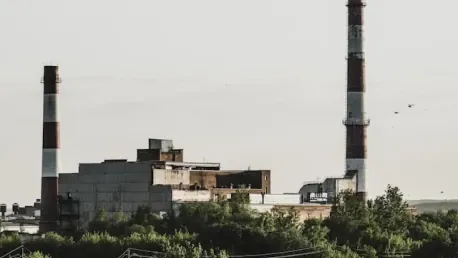In July 2024, Opec-plus members saw a notable increase in their crude oil production by 240,000 barrels per day, pushing the total output to 34.2 million barrels per day. This rise was predominantly driven by increased production from Iraq, Russia, and Nigeria. This increase, however, was accompanied by a decline in compliance with the agreed output quotas, highlighting the ongoing challenges faced by the consortium in maintaining uniform adherence to their production targets. Despite setting ambitious goals, the disparity in compliance among members indicates that achieving these targets remains complex, influenced by a blend of geopolitical and domestic factors.
Persistent variations in oil production levels underscore the difficulties Opec-plus experiences in keeping a consistent output quota across its diverse membership. The disparities in compliance can largely be attributed to the individual geopolitical and economic circumstances of each member country. These factors make it challenging for Opec-plus to present a united front in terms of oil output. Notably, Iraq, Russia, and Nigeria played significant roles in driving the production increase, each influenced by unique national events and policy shifts that contributed to the overall rise in output. This non-uniform compliance has broader implications, affecting global oil markets and pricing structures.
Geopolitical and Economic Factors Driving Increased Production
In the context of Iraq, heightened output can be linked to substantial efforts in rebuilding its oil infrastructure and optimizing its production capabilities. Iraq’s increased production is part of a broader strategy to maximize its oil revenues, vital for the country’s economic recovery and growth. Following years of conflict and instability, recent improvements have enabled Iraq to enhance its oil production, clearly reflecting in the July figures.
Russia, on the other hand, faced different dynamics. Despite being under international scrutiny and sanctions, Russia managed to boost its oil production. This increase might be interpreted as a strategic move to leverage its oil resources amid geopolitical tensions. Russia’s production hike is also suggestive of its resolve to maintain a significant share in the global oil market, asserting its role as a key player despite external pressures.
Meanwhile, Nigeria’s situation presents another angle. The country has historically struggled with production disruptions due to internal conflicts and militant activities targeting oil facilities. However, in July 2024, Nigeria experienced a period of relative stability, enabling it to ramp up production. The increase in Nigeria’s output highlights how periods of domestic tranquility can significantly contribute to national production levels. Together, Iraq, Russia, and Nigeria exemplify how diverse national factors can drive production changes within Opec-plus, reflecting broader geopolitical and economic realities.
Compliance Challenges within Opec-Plus
In July 2024, Opec-plus members experienced a significant boost in crude oil production, increasing by 240,000 barrels per day to reach a total output of 34.2 million barrels per day. This growth was primarily driven by Iraq, Russia, and Nigeria. However, this rise in production also came with a decline in adherence to the agreed output quotas, revealing the ongoing difficulties within the consortium to maintain consistent compliance. Despite ambitious targets, the varying degrees of compliance among member countries suggest a complex landscape influenced by both geopolitical and domestic factors.
The persistent fluctuations in oil production levels highlight the challenges Opec-plus faces in achieving a unified output quota. These compliance disparities are largely due to the unique geopolitical and economic situations of each member nation. Such conditions make it challenging for Opec-plus to maintain a cohesive production front. Iraq, Russia, and Nigeria were key contributors to the production increase, each driven by specific national events and policies. The inconsistent adherence to output quotas has broader implications, influencing global oil prices and market dynamics.









